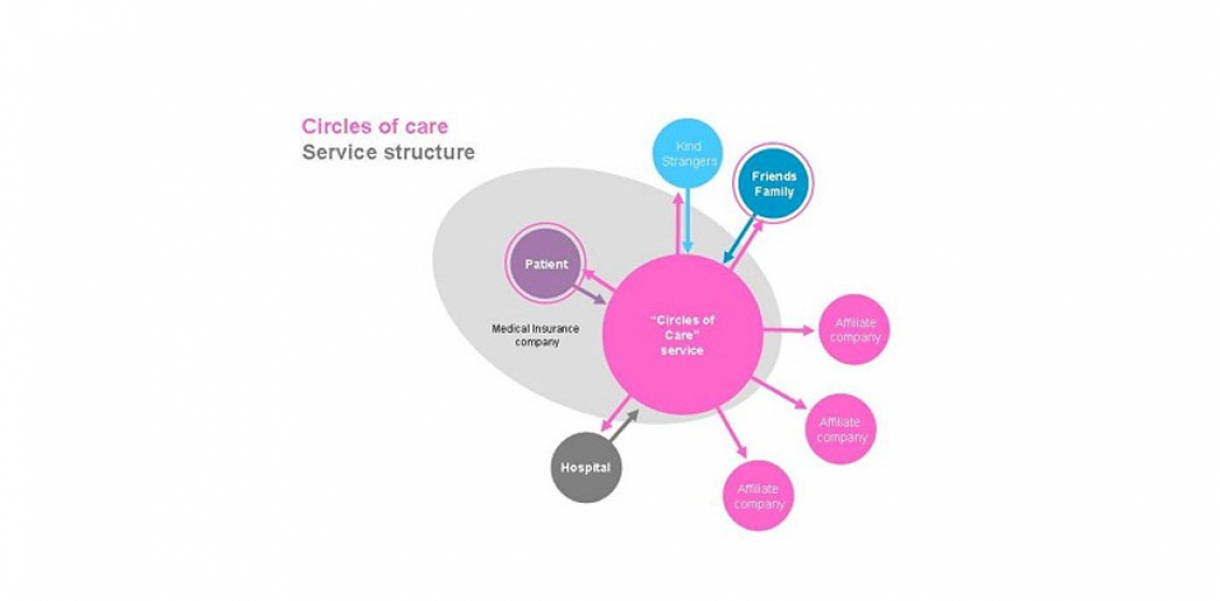HealthNet processes information, maintains it and provides services globally in real time. Its applications bring 21st-century, specialised care from the preventive to the curative directly to patients, their families and caregivers.
Functionality and use of design
HealthNet, by tracking, storing, and transmitting personal medical data, enables individuals to join in managing their own health and well-being. Available by network to medical providers in times of consultation or emergency, real-time, on-demand information enables individuals to receive high-quality health care wherever they may be, promptly, securely and reliably.
How did this design improve life?
Health care is a critical concern for all people. This project is designed for the American public, but it is a generic model, adaptable in part or in whole to societies around the globe as their technological capabilities permit.
In the United States of America, health expenses in 2002 totalled an estimated $1.5 trillion, an astounding 12.6% of GDP. High healthcare costs mean that a large segment of America simply cannot afford serious illness. Forty-four million Americans have no health insurance. While they understandably fear to get sick, they also have other reasons to avoid a hospital stay. Not widely known, reports indicate high rates of error in some hospitals; and healthcare professionals, with their own anxieties, not infrequently conduct overly conservative practices because of soaring malpractice insurance fees. In the hospital and out, healthcare professionals are deluged with information that can only be partially assimilated. Opportunities to improve patient care go by unnoticed. Healthcare activities are performed in a multitude of locations, and important information is lost because there is no effective way to capture it, access it, update it or share it.
Advocates for improving the healthcare system in the United States have long called for electronic information processing -- including health records, claim submission, online patient information and evidence-based medical decision-making as the primary forms of an upgrade. Attempts so far, however, have been institution-centric, meaning that patient data is inaccessible outside a hospital's electronic walls. The overwhelmingly prevalent approach is nothing more than 20th century paper records.
To provide 21st-century health care across society, HealthNet has been designed as an infrastructure of advanced information technologies networked across the nation, region or globe, and supporting a broad collection of user-centred applications. The combination of healthcare infrastructure and applications will provide users throughout society with systemic, integrated means for managing health care. Health care administrators and researchers will be able to track and respond to public health problems in real time. Individuals will be empowered with the tools to make informed decisions tailored to their personal health needs. Caregivers will have equal access to their patients and the medical expertise they need to deliver optimum supportive care.
What is HealthNet?
A systemic, integrated solution
Current efforts to improve health care through information technology are severely limited by their narrow focus on the information environments of single organizations -- individual hospitals. HealthNet, a 21st-century approach, mandates attention wherever health care is delivered, extending the delivery of care to the workplace, pharmacy, clinic, health club, home, emergency vehicle or disaster scene -- any place where individuals might have cause to contact the healthcare establishment.
Real-time health care
HealthNet's infrastructure will allow health management at all levels to be more flexible and responsive. Examples of dramatic improvement in services are many when information is timely. As a sample: outbreaks of infectious diseases and shortages of supplies can be identified before they become acute; massive data stores can be mined to identify adverse drug interactions; patients can be directed to facilities based on patient load and available expertise. The victims of the Indian Ocean tsunami would have been well served by HealthNet.
Empowerment of individuals
Digital technologies can alter the way medical services are delivered. A nation-wide, region-wide or, optimally, international network would allow individuals to receive diagnoses in the comfort of their homes, get relevant information from caregivers, receive sophisticated monitoring remotely, and have the best of network-wide consultation available through their primary care physicians -- all without taking up hospital beds.
Focus on prevention
HealthNet's robust, integrated infrastructural network with the many specialized applications built upon it can help to move the health profession's focus from acute care to prevention. An individual's health habits can be tracked on request and the results analyzed. Benefits of improved health behaviour can be presented convincingly and patient progress monitored with minimal intrusion. Patients can be made aware of possible medical problems when they first appear, well in advance of the need for extreme medical intervention. The spread of most infectious diseases can be anticipated and blocked before they can take hold and, where an outbreak does occur, its impact can be drastically reduced by the rapid, coordinated response.
A presentation of HealthNet can be seen at: http://www.id.iit.edu/profile/gallery/healthnet/.
Drawbacks of life improvement
HealthNet, as a proposal, is a model for what can be. It is complex and is designed to take advantage of technologies coming online in the next few years. It is bold in concept, and as such, faces difficulties in implementation always faced by proposals potentially revolutionary. While the obstacles and "drawbacks" below are not roadblocks, they are potential impediments to implementation and should be considered in planning.
Health care is a system with many players and many priorities.
Delivering health care to any country is big business. To Americans, it is a trillion dollar business. Under that umbrella are the pharmaceutical industries, insurance industries and medical technology industries to name just a few. Each industry has its own processes, objectives, traditions and culture.
Comment. While HealthNet can offer great cost savings through extended and improved communications and information technologies, reconciling the needs and goals of all parties will require government-level leadership and higher levels of cooperation for international implementation. A governmental leadership role need not metamorphose into a control role, but it probably should become more than simple consensus building.
HealthNet requires providers to work in a completely new paradigm.
Healthcare experts acknowledge that an electronic system for storing, accessing and exchanging medical data would save money, reduce errors and allow users unprecedented involvement in the management of their own health. But the overwhelming majority of healthcare providers in U.S. hospitals and private practices have refused to shift their operations to a 21st century model that employs information technology. Habit and conservative tradition have proven to be formidable obstacles at the most fundamental level.
Comment. Leadership by example, in this case, may be the best way to demonstrate the value of a change in mindset. The medical industries are highly competitive, and demonstrated success quickly becomes mainstream practice.
Substantial costs may preclude financial gains.
The costs involved in moving to an electronic system of delivery may be so substantial that the return on investment could be difficult. In the U.S., a majority of hospitals have cutting edge technology to support operating and diagnostic functions, but antiquated technology everywhere else. One of the major reasons why hospitals have not yet embraced electronic health records is that they have overspent on operating and diagnostic room technologies.
Comment. With little money to spare, the costs of installing or upgrading information technology systems and integrating them with HealthNet could be too costly for any institution to undertake without substantial governmental subsidy. As part of government healthcare reform, such subsidies may be highly effective uses of funding. With health care now a major governmental priority, the HealthNet approach and its focus on the empowerment of individuals is a timely strategy.
Some of the requisite technologies are still in development.
Technologies such as self-healing IT are critical to the success of a giant system such as that proposed for HealthNet. While this and other technologies expected to play a role are in late stages of development, the exact nature, cost and date of arrival for every technology is not yet fully known.
Comment. To fail to plan for the inclusion of soon-to-appear technologies would be a serious omission. A dangerous failure to be guarded against in advanced planning is the failure to anticipate important emerging technologies. Technologies that are delayed or initially too costly may be staged for inclusion if appropriate allowances have been made in the implementation plan. The cost of their implementation without anticipation can be catastrophic -- and unavoidable if the benefits of a technology are unquestionably valuable.
Research and need
The HealthNet system was created using Structured Planning methodology, a process for conducting research and integrating the results in the planning process. For a full description of the process, see papers by Charles L. Owen at http://www.id.iit.edu/papers/Owen_theoryjust.pdf
The process proceeded in phases as outlined below.
Project Definition
The Structured Planning process began with Charters presenting the overall project. These "briefs" served as project introductions for two four-person planning teams who were to work in coordination on system infrastructure and system applications. "White paper" Defining Statements were next developed from research of high-level policy issues. These brought recognition of critical issues and argued the positions that the project would take on them (issues of network scale and private versus public supervision, for example, were first encountered here). Along with the Charter, Defining Statements focused the direction of the project.
Action Analysis
To maximize the reach of the projected system, research was conducted to identify the full range of users and their operational needs. This information was organized in "Function Structures" showing major modes of projected system operation, activities to occur within them, and the functions to be performed by and with the system.
While a significant part of the Action Analysis process was the identification of users and functions, a concerted research effort was devoted to uncovering problems that occur in analogous systems as functions are performed -- why things go wrong in performing some functions, and why other functions are performed well. These insights were explored in detail and written up in documents called Design Factors. Activity analyses recorded information about users and Functions; Design Factors documented insights and ideas associated with performing the functions. Ideas suggested by Design Factors or conceived through other encounters were captured by team members on single-page Solution Element forms, with enough detail about the ideas to give them substance when they would be needed later. Overall, three sets of critical information were the product of each team's Action Analysis research: a set of functions (organized in a Function Structure), a set of insights about them (Design Factors) and a set of 242 total preliminary ideas (Solution Elements).
Information Structuring
A wealth of information creates its own problem -- how to organize it. Categorical lists, good products of analysis, are ill-suited to the creative possibilities of synthesis. From the planning standpoint, whether two Functions should be considered together should not be because they are categorically "related" in some manner, but because a significant number of their potential solutions are of concern to both. Which preliminary Solution Elements were of concern to each Function was established with an interaction analysis procedure. Using this information, a computer program, RELATN, established links between Functions. Another program, VTCON, then found clusters of highly interlinked Functions within this network and organized them into a hierarchical Information Structure, a "road map" optimized for innovative planning.
Synthesis
Working with the Information Structure as a guide, the teams used a structured brainstorming technique called Ends/Means Synthesis to match, modify and invent multi-faceted ideas suitable to the needs of the Functions now revealingly associated in clusters. Original Solution Element ideas were used where appropriate. Others were modified to reflect new possibilities seen in the associations of the clustered Functions. New ideas were developed to fill the needs remaining.
In an ongoing evaluation process to check for coverage, features of final ideas, now becoming System Elements (elements of the final system plan), were evaluated for their fulfilment of Functions. System Elements were also considered independently with each other in a search for additional synergies. Where new ways to work together were found, additional modifications were made to properties and features, and the results were incorporated in the final documents. The last task, System Element description, completed specifications with succinct descriptions, relevant required properties and features, and extensive discussions and scenarios to develop the ideas fully, both conceptually and operationally.
Communication
The result of the Structured Planning process was a presentation and two reports. The presentation combines infrastructure and applications to show the complete system. The reports discuss infrastructure and applications separately with Overviews that provide background introducing the system and the System Elements that describe the component concepts.
Designed by
Matt Hamlin, Ryan Pikkel, Samantha Ruiz, Brandon Schauer, Akilah Williams, Michael Winnick, Arisa Xumsai & SuDong Cho - USA






